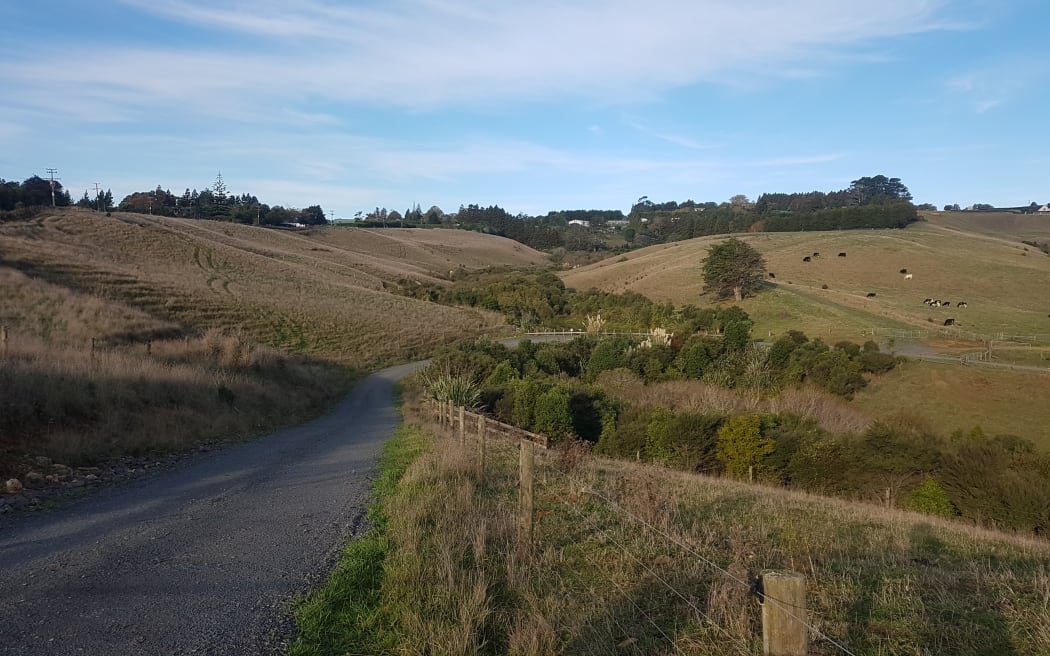High levels of toxic nitrates in water moving under and through South Auckland to harbour

New research shows how water with a lot of toxic nitrates in it is moving under and through South Auckland.
The levels detected in the new GNS study in groundwater and streams around Pukekohe and Bombay are as high as 19mg per litre, eight times the 'national bottom line' in rivers.
It also shows just how long nitrates hang around: Even if all polluting stopped tomorrow, they would not be gone from groundwater till as late as 2080.
Auckland Council intends to use the GNS study to help with long-term planning in Franklin, where housing and horticulture were in tense competition.
"Concentrations exceed the Maximum Acceptable Value for drinking water and the National Policy Statement for Freshwater Management 2020 national bottom line for nitrate toxicity in rivers," said the study, which councillors were briefed on this week.
Above the bottom line, algae and cyanobacteria growth can kill off freshwater fish and invertebrates.
"If nitrate loading stopped in 2024, improvement to below NBL (national bottom line) would only be seen by 2050 for Pukekohe and by 2080 for Bombay."
The government agreed to exempt Pukekohe from the nitrogen toxicity targets when new water standards were introduced last year.
The high-nitrate water was not used for drinking, except maybe from a few private bores, but it was crucial for managing the environment to know more about it, and this new research was a big plus, council manager of natural environment strategy Dave Allen said.
"It certainly gives us a lot more understanding of the the age of groundwater ... of the flow regimes and where some of the levels are high ... and other areas where they're low," Allen said.
Levels tended to be higher upstream, and more diluted downstream.
"It will then give us a much greater understanding as to what mitigations we might need to consider in certain geographic areas, and what land use activities should be considered for some change," he said.
Public health researcher Marnie Prickett, who is part of an environmentalists' campaign for a stricter limit on nitrate of 1mg/litre, agreed they already knew levels were high - now this showed how the water moved.
"These are really, really big numbers," Prickett said.
The study showed a lot of nitrates ending up in the Manukau Harbour.
"For many Aucklanders, perhaps the most distressing impact of this would be the harm to the health of Manukau Harbour.
"It also talks about the fact that it is partly coming from horticultural land ... and the Auckland Council itself says that those horticultural systems are often over-fertilised."
Horticulture NZ was approached for comment.
The study said: "Market gardening dominates the Pukekohe and Bombay basalts, which are subject to nitrate loss into groundwater... High nitrates from the springs dominate nitrate concentrations in receiving streams."
The council was sending the study to mana whenua and growers, and Allen said it would help them discuss what to do together about it, including regulatory and non-regulatory responses to land use.
The area had competing demands and values, he said.
"We're trying to, you know, look at how we can improve some of the environmental values here.
"The horticulturalists ... have indicated that they have been reducing their fertiliser application over some decades.
"The question is, well, how do we track that, and how do we ensure that any changes that are proposed can actually be illustrated as having a positive bearing on the future state of nitrates within the groundwater resource of the Franklin area."
They still needed other tools for that tracking, he said.
"We're obviously very aware that the urban development into the South Auckland area will also have a bearing on some of the sort of outcomes for water."
Prickett said there had been "very little pressure" on growers to reduce nitrogen loss "but it is absolutely possible".
The national bottom line of 2.4mg/l was set in last year's freshwater standards, alerting councils to not let the nitrate level in rivers rise above that.
Experts had said a Dissolved Organic Nitrogen (DIN) level of 1 mg/l was the best way to protect rivers.
The Ministry for the Environment had said it was considering the possibility of a 1 mg/l bottom line in the next year.